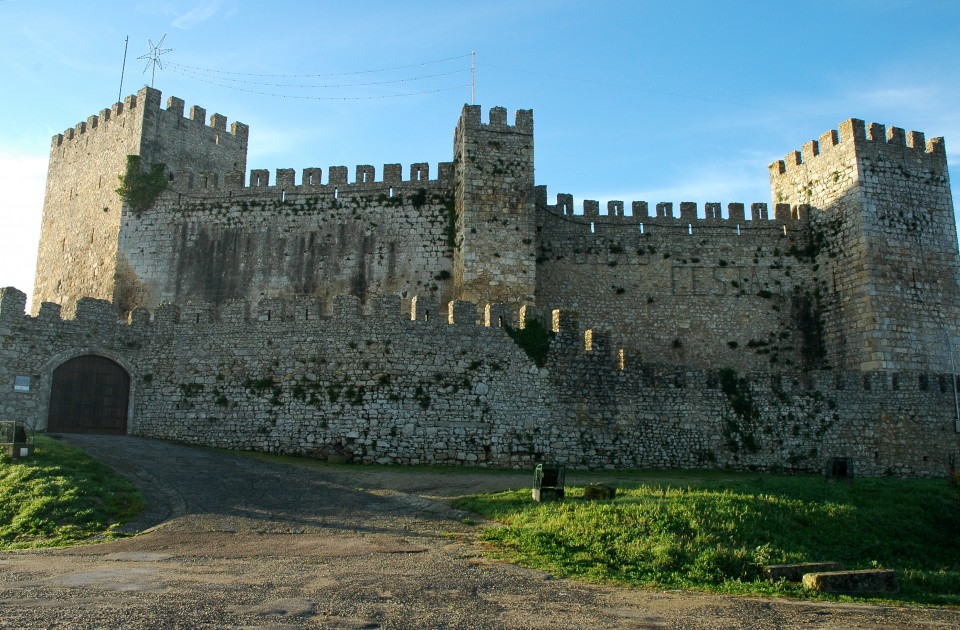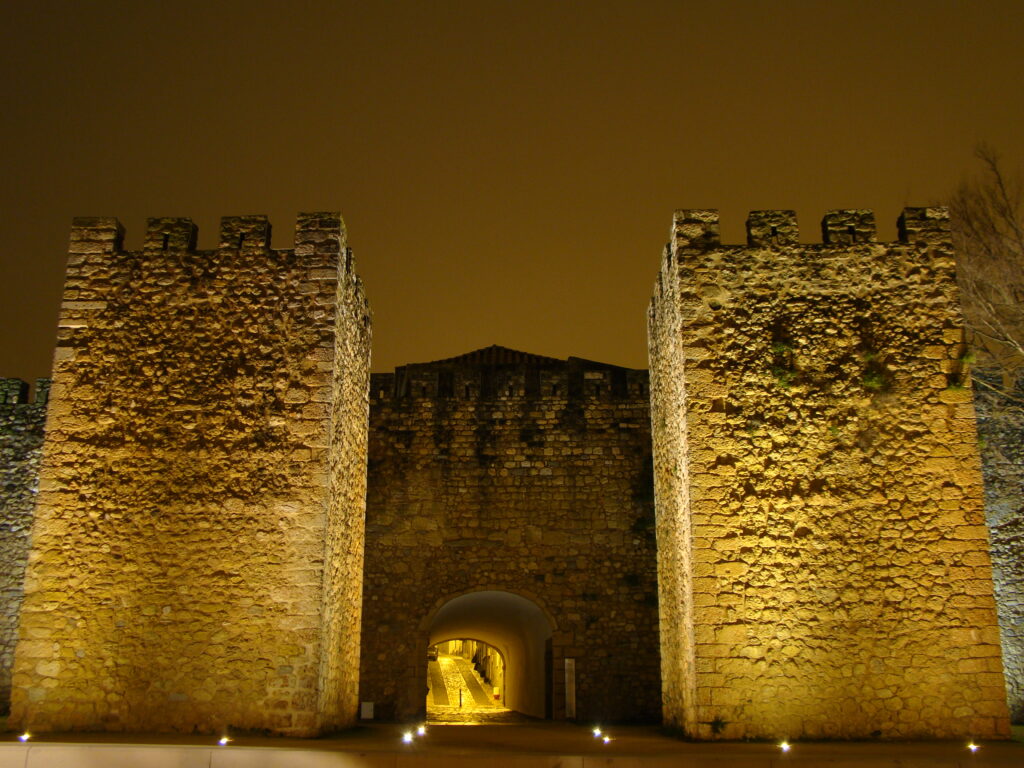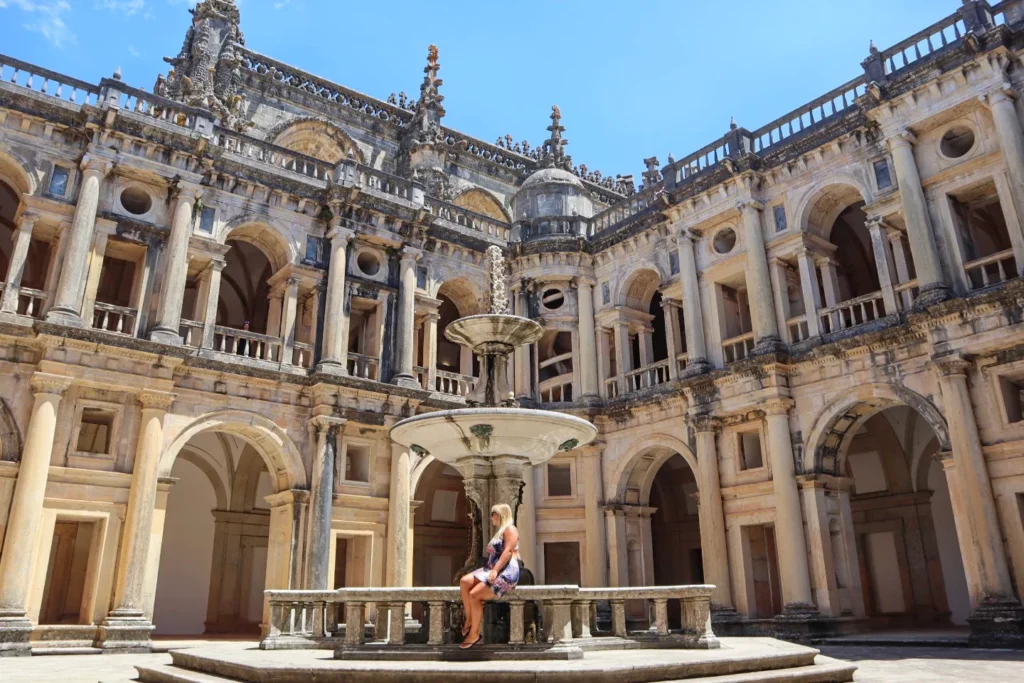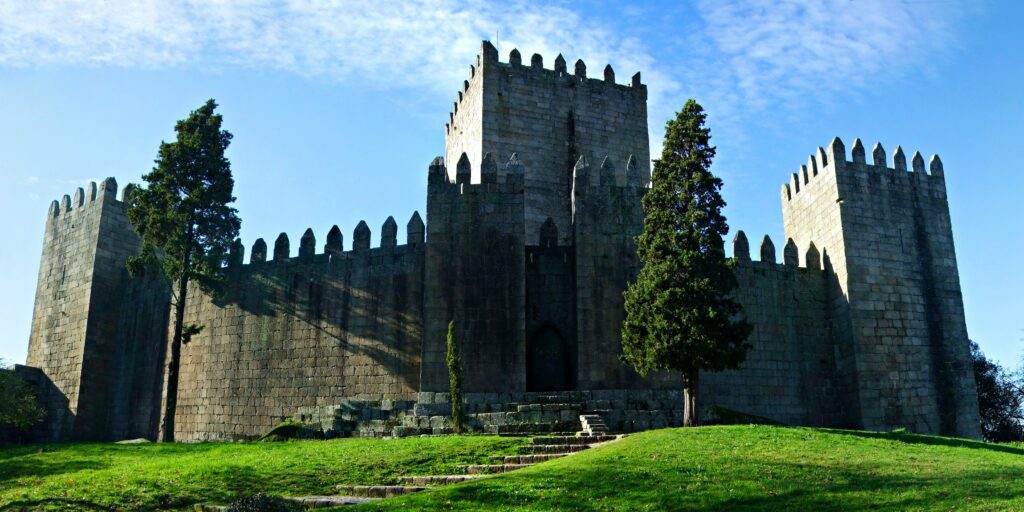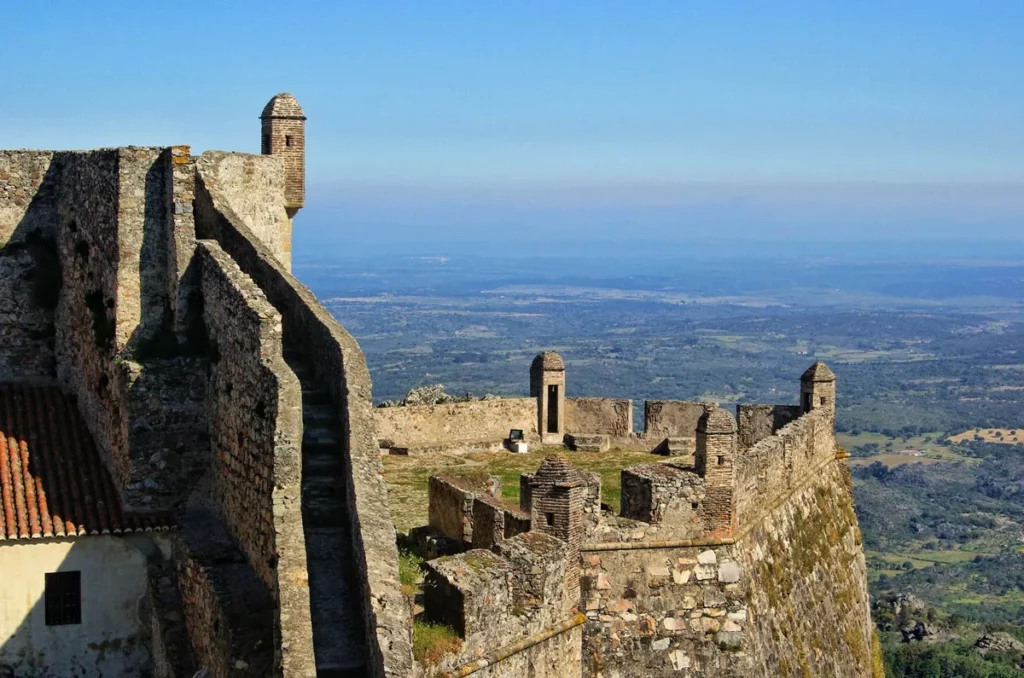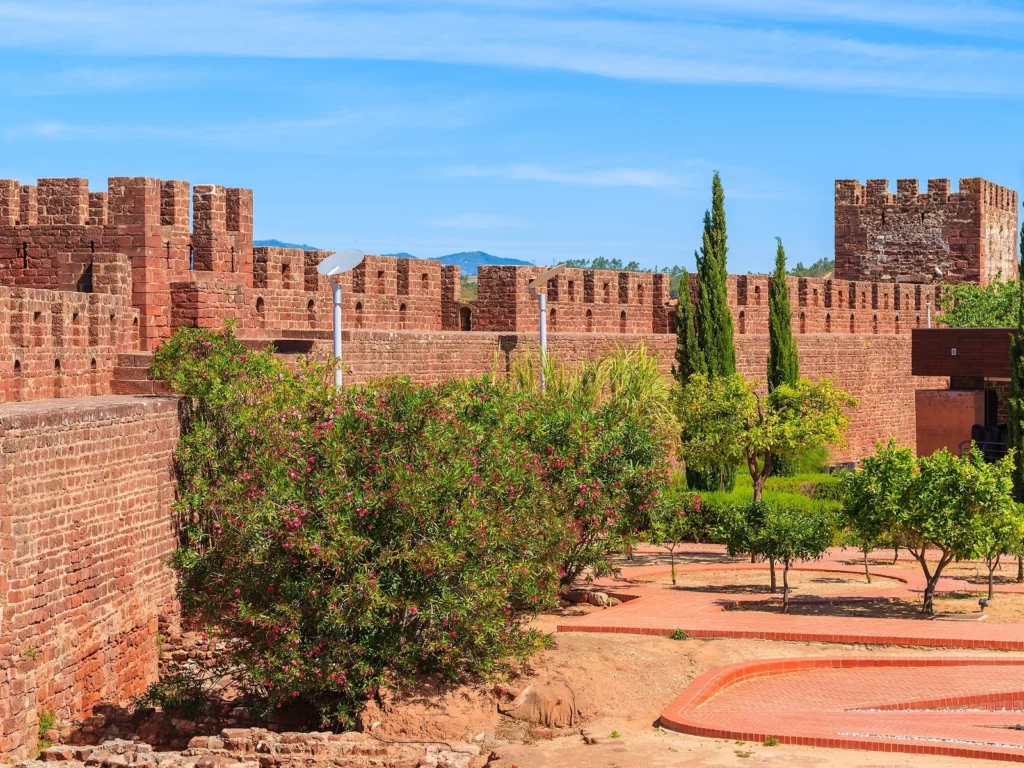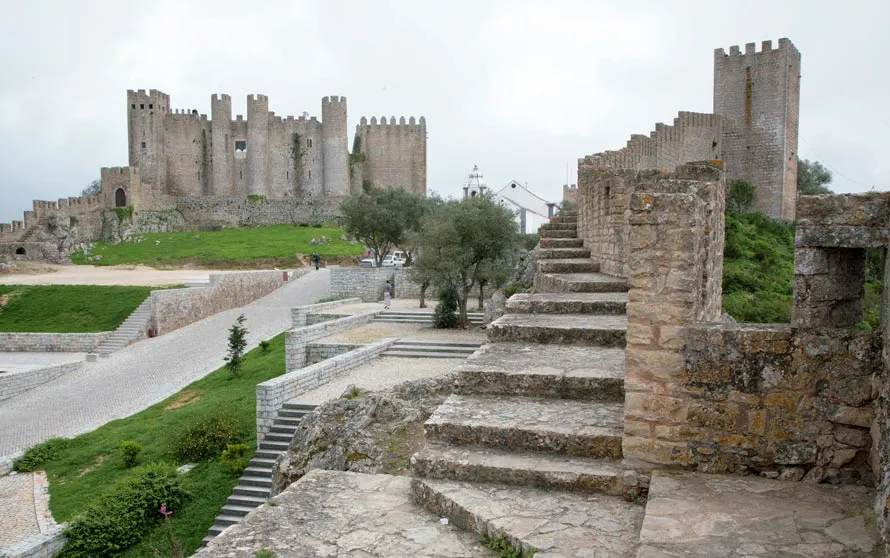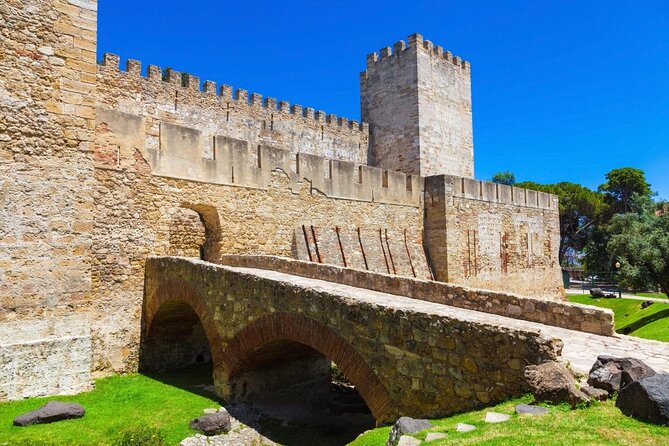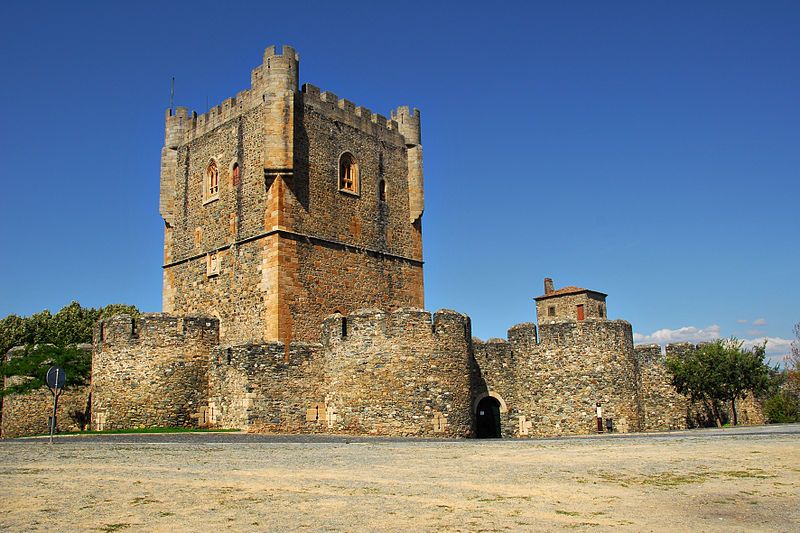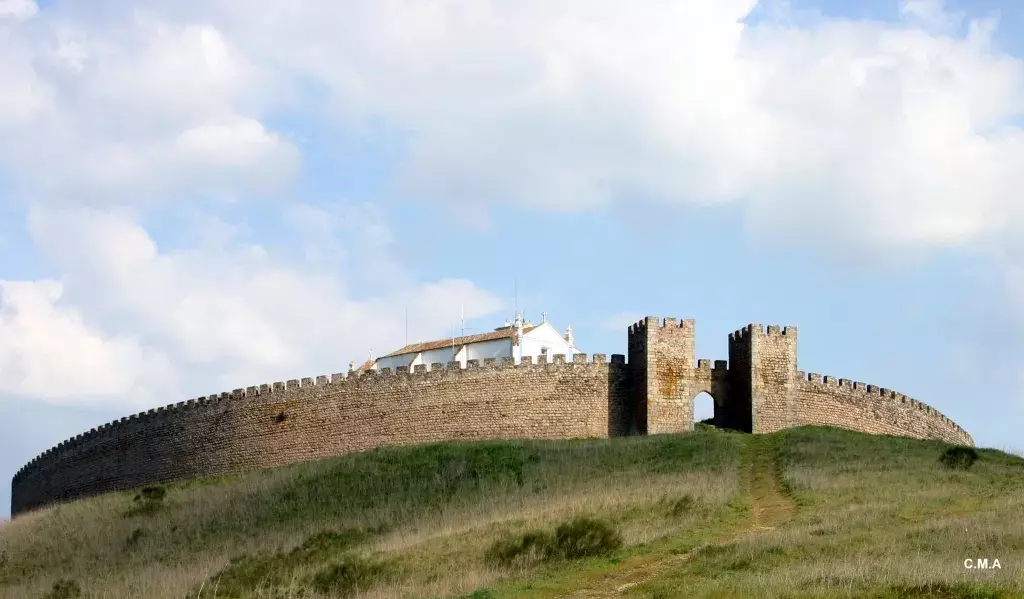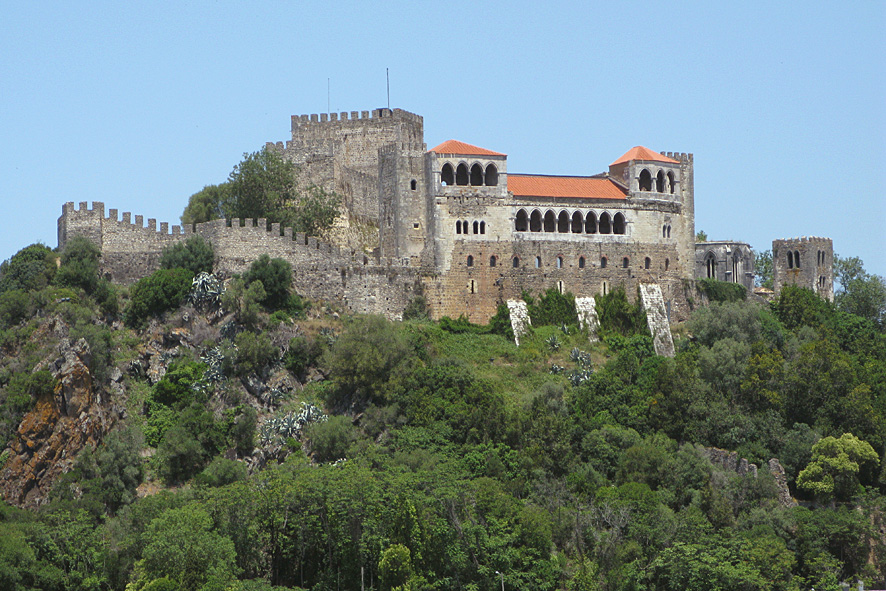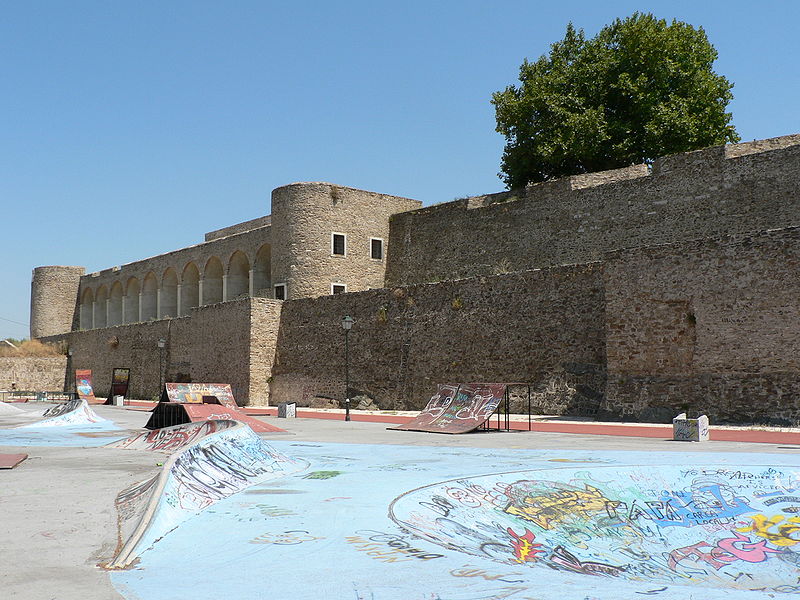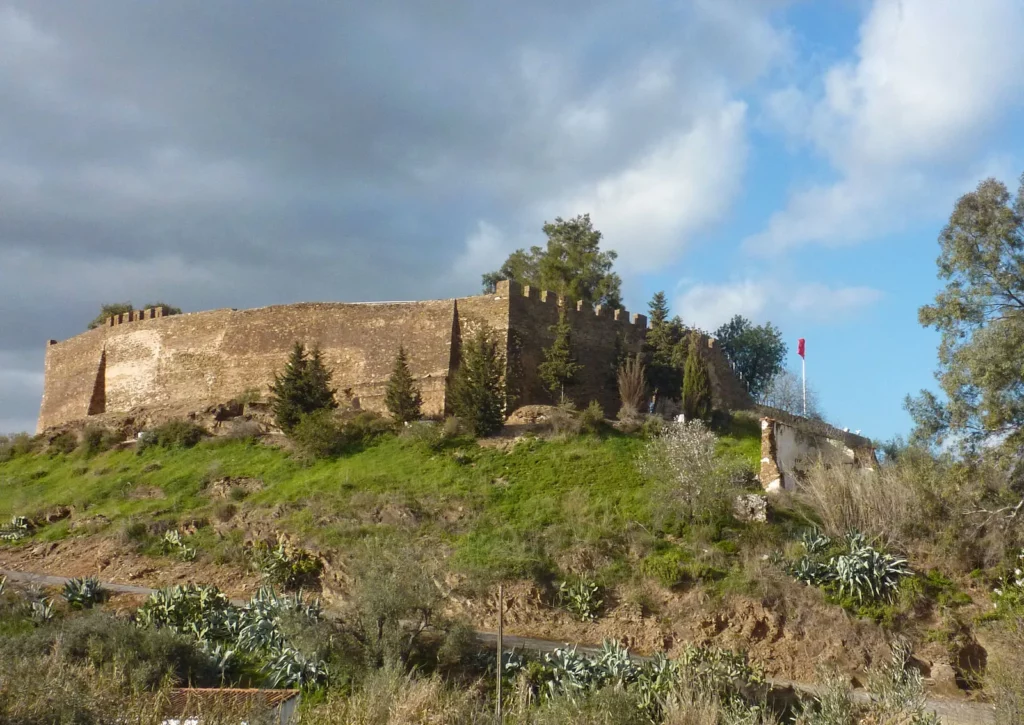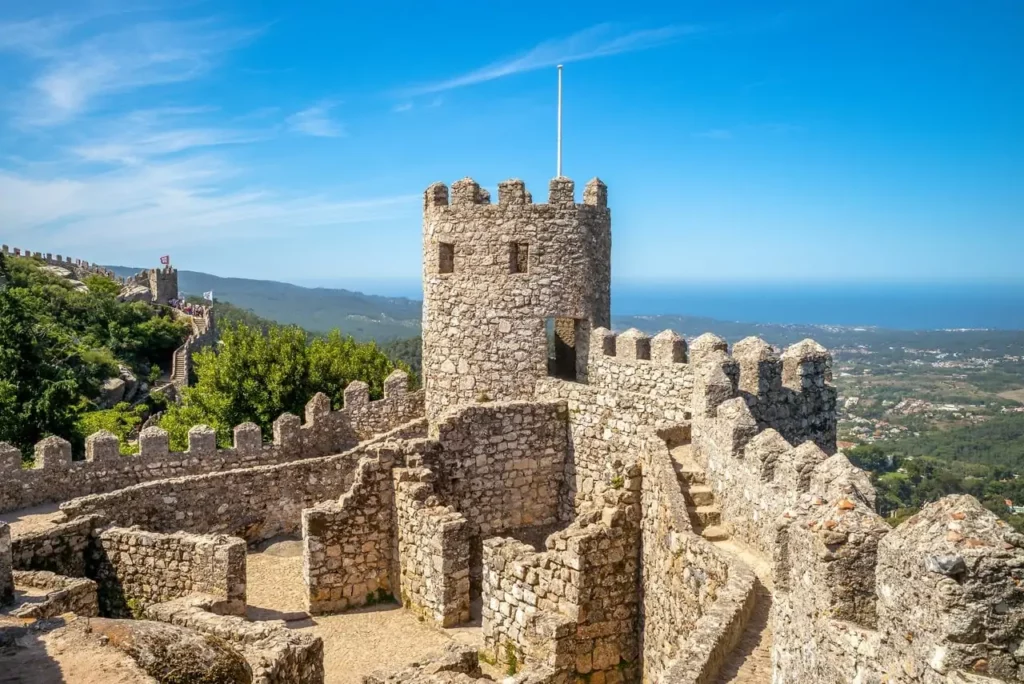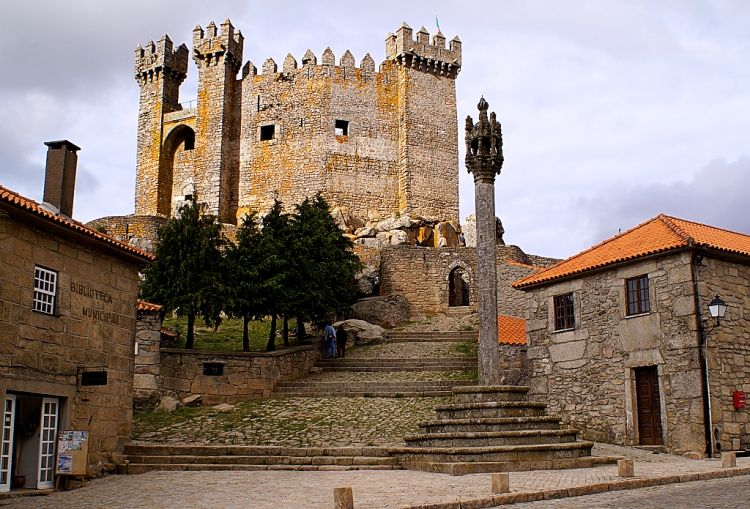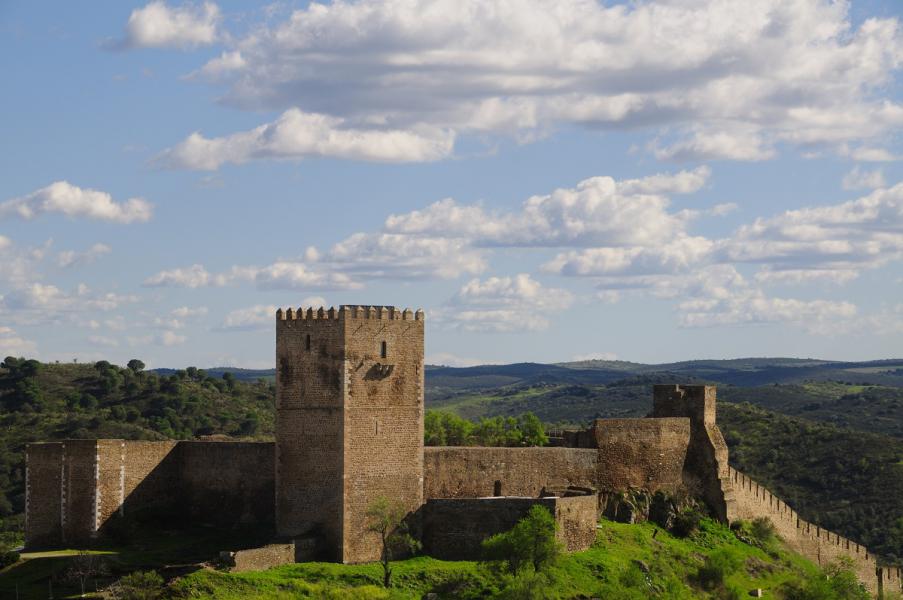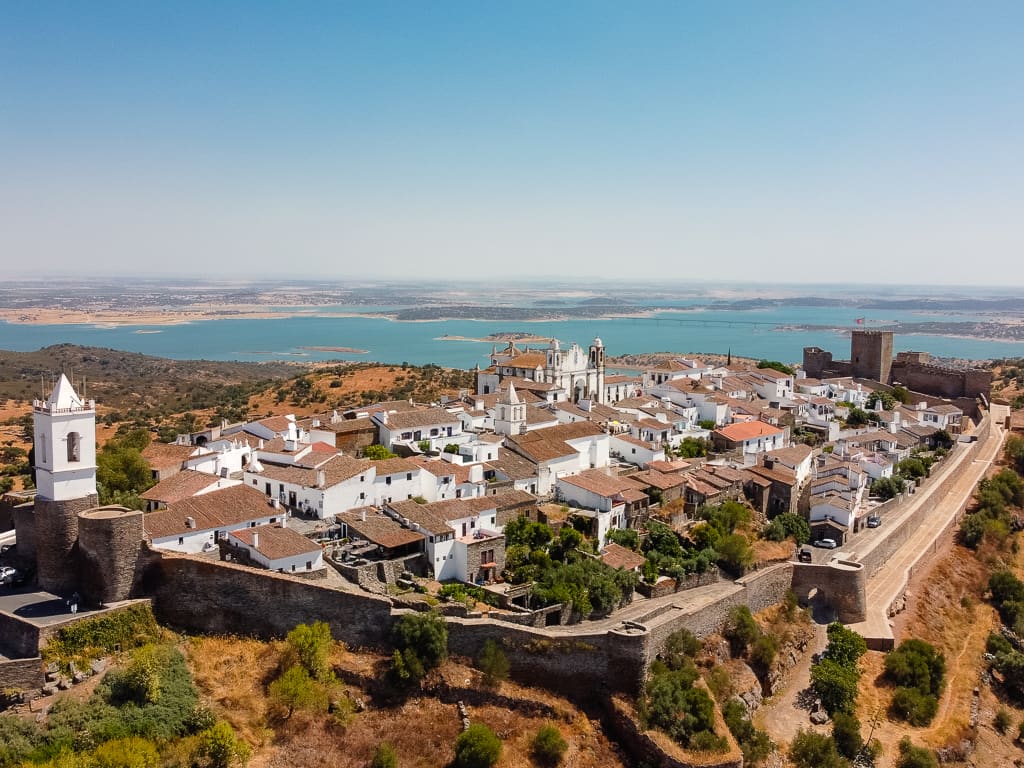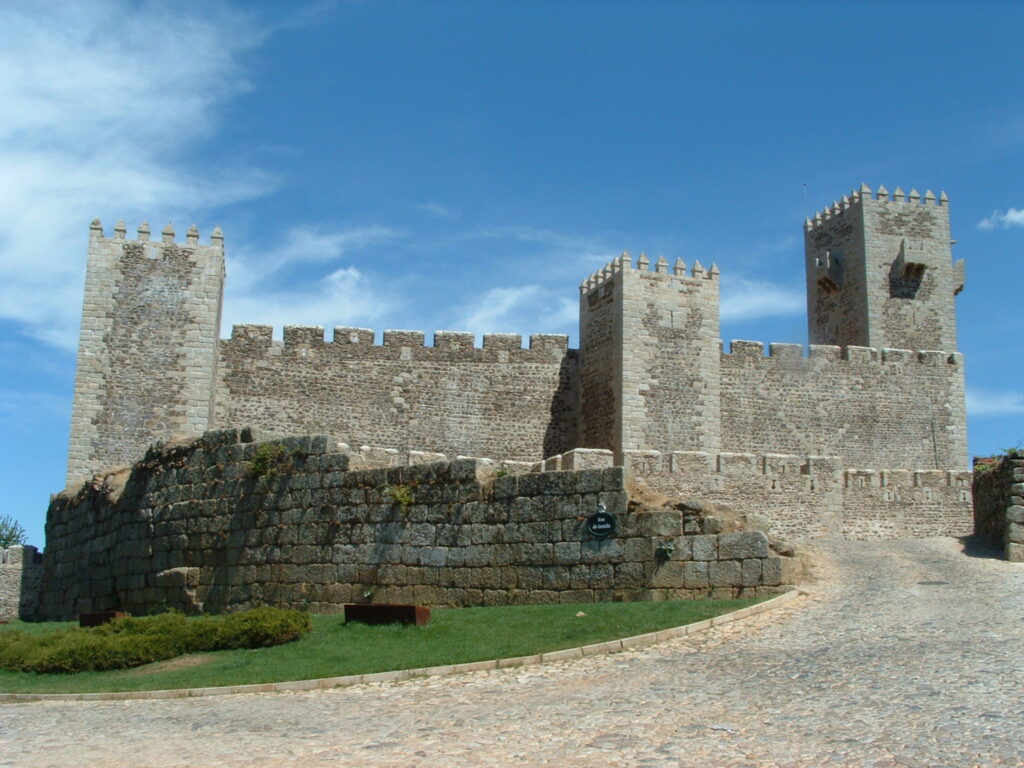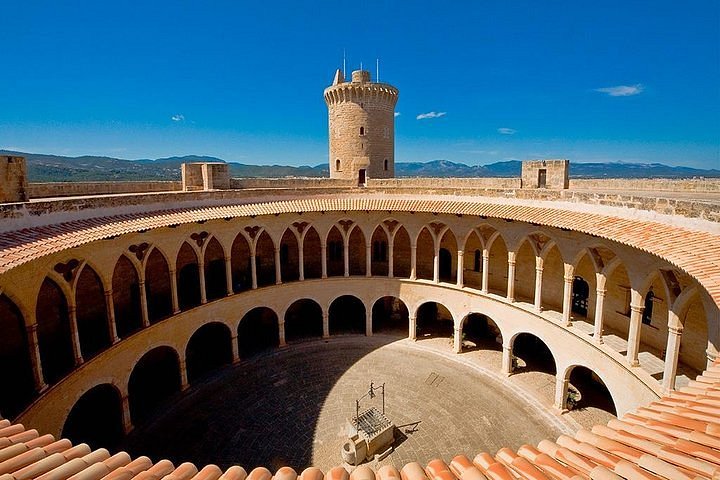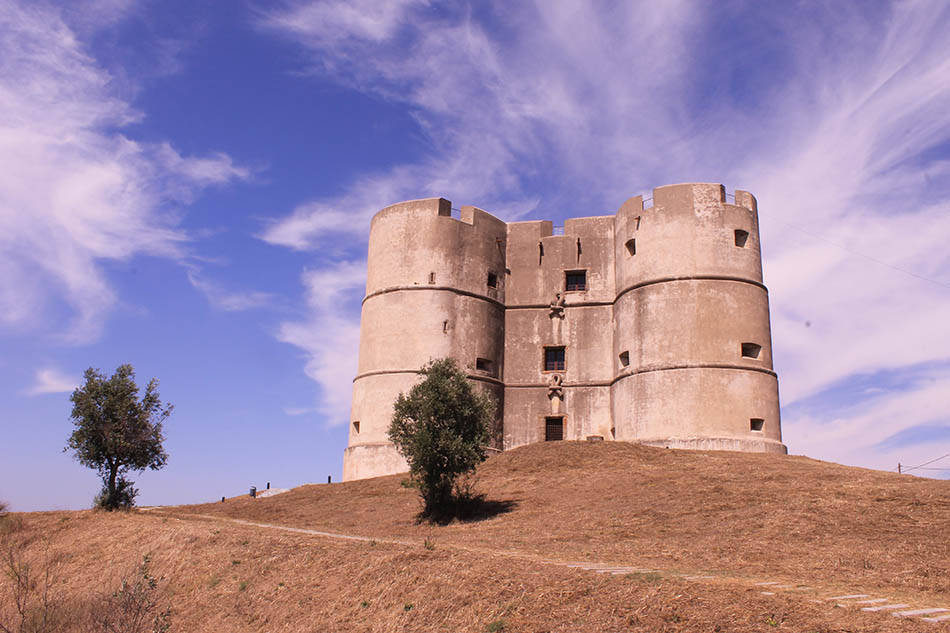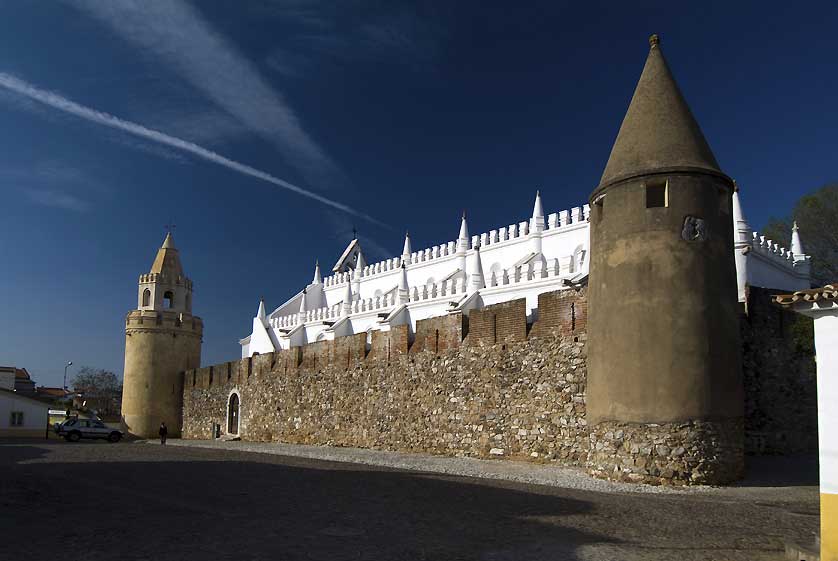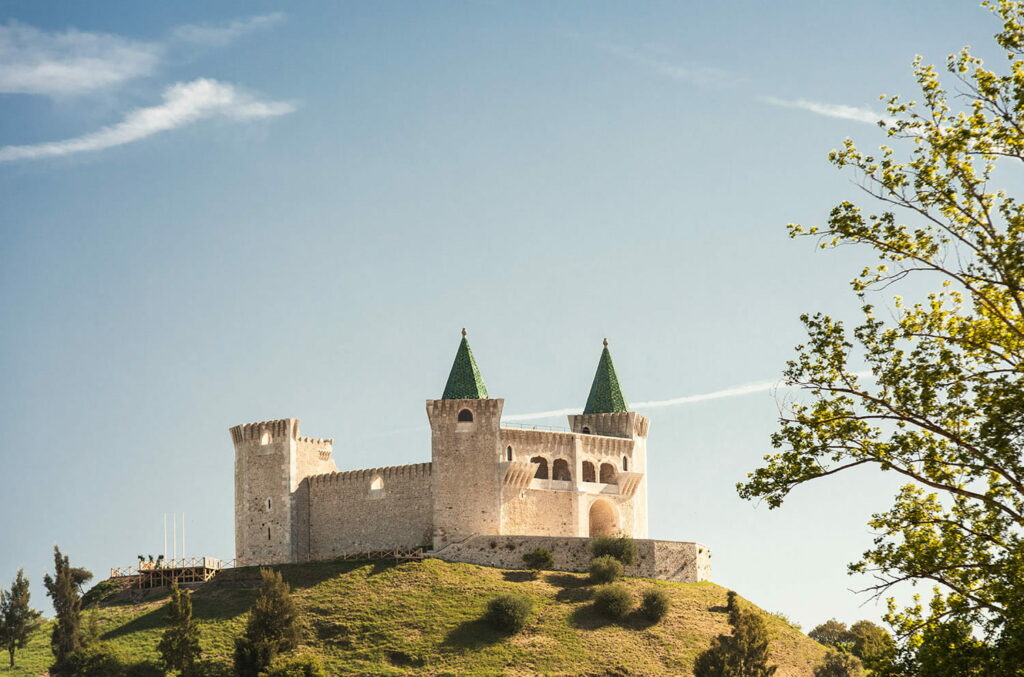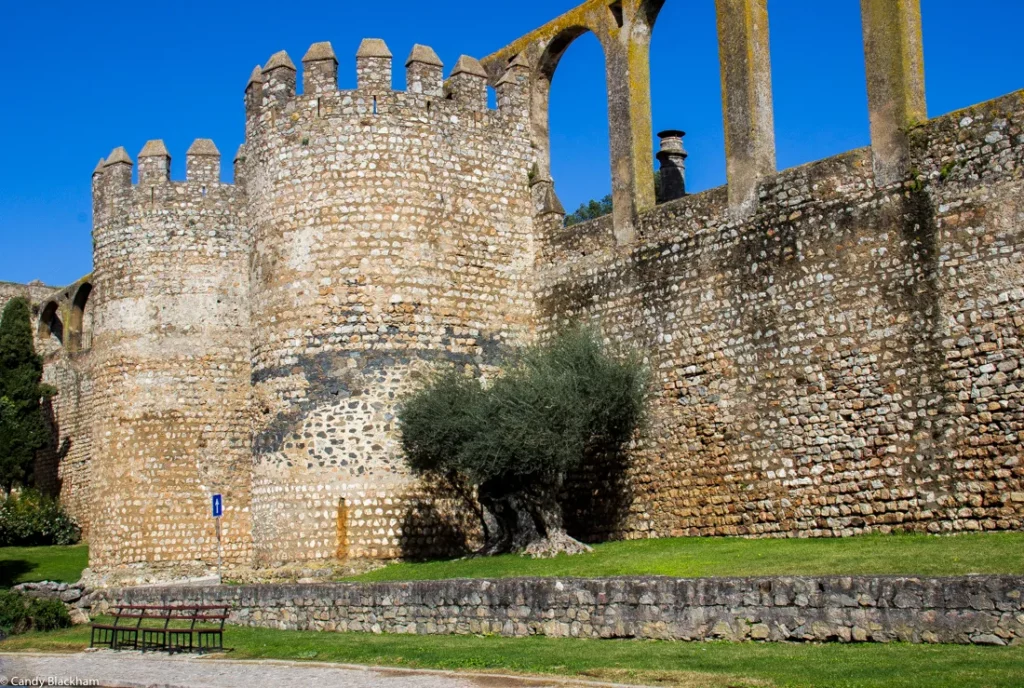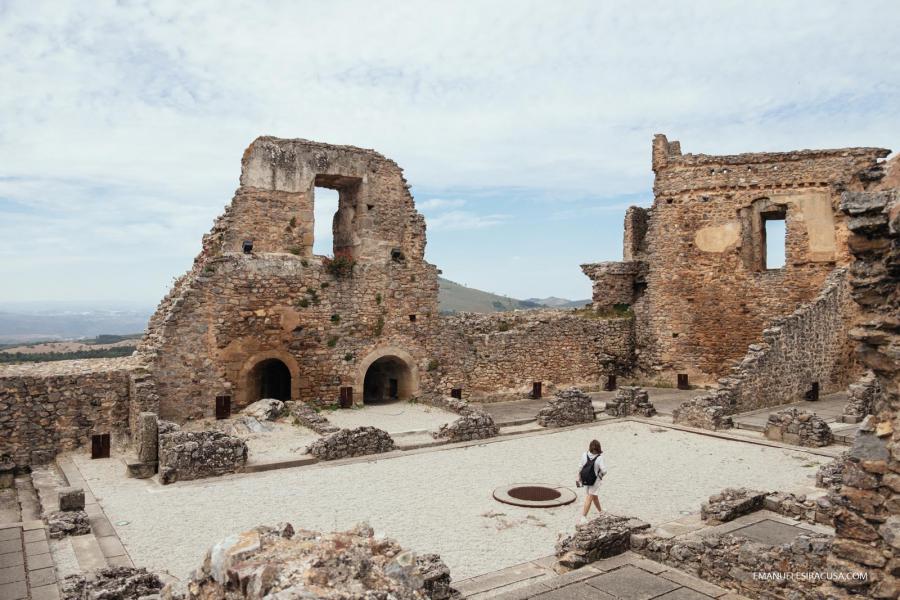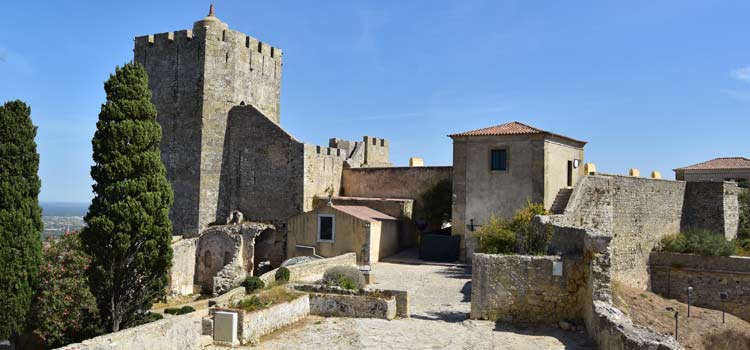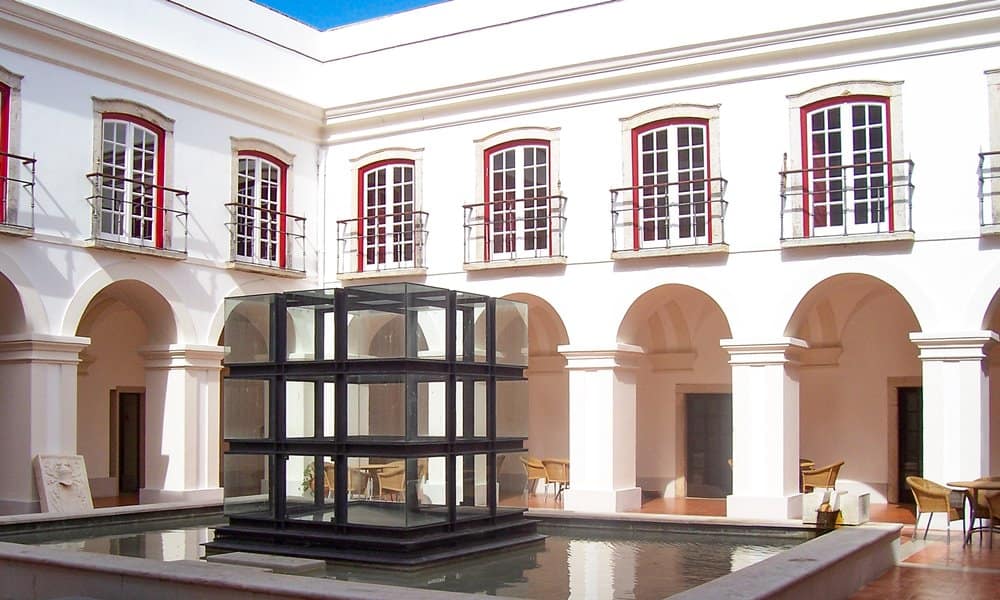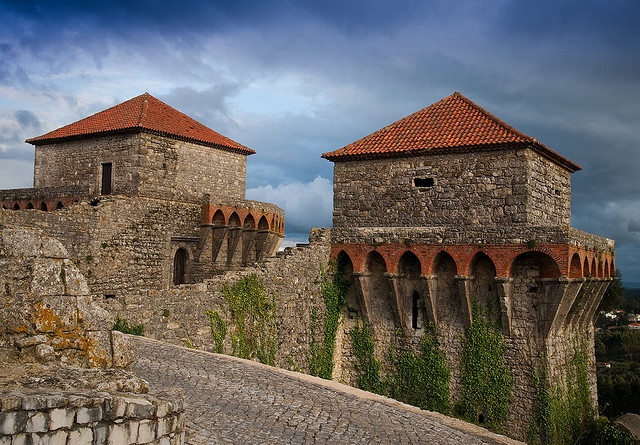Welcome to our guide to the magnificent castles of Portugal! As avid travelers and history buffs, we were in awe of the wealth of fortresses, towers, and ramparts that dot the Portuguese landscape. From the rugged coastline of the Algarve to the lush green hills of the Douro Valley, Portugal’s castles are truly a sight to behold. We’ve rounded up the top 30 castles in Portugal, each with its own fascinating story and unique architecture. Whether you’re a fan of medieval battles or simply appreciate the beauty of ancient stonework, there’s something for everyone on this list. So, come with us on a journey through Portugal’s rich history as we explore the top 30 castles in the country.
Table of Contents
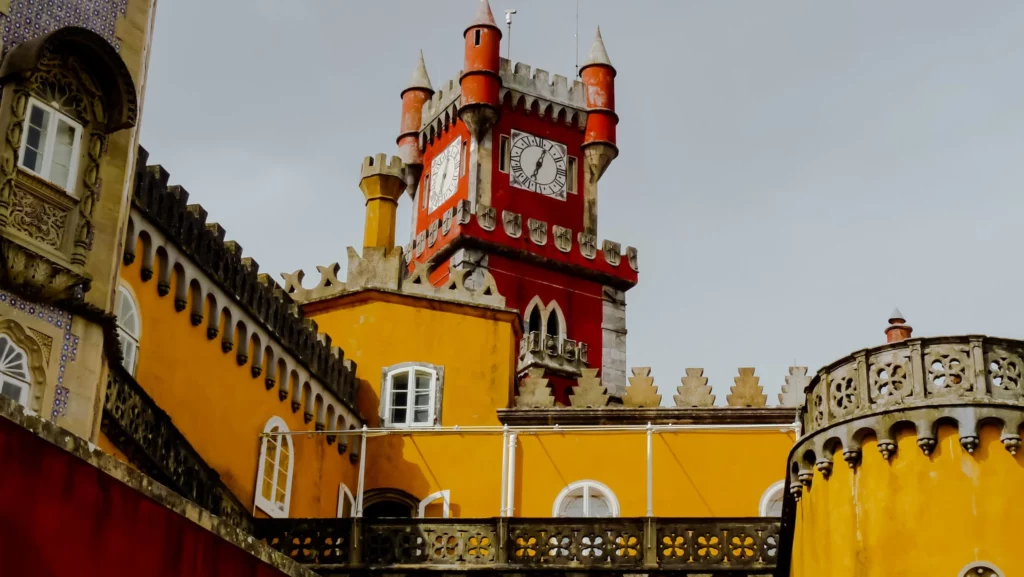
Pena Palace
For those who enjoy visiting historical places such as castles or love hiking, Sintra is a must-visit location. It is home to the magnificent Pena Palace. The National Palace, listed first among the most stunning castles in Europe, seems like something from a fairy tale. The name suggests that it is a palace however it’s actually a Romanticist fortress. Built in the 19th century to fulfill the desire of Ferdinand Saxe-Coburg-Gotha, Queen Maria II’s husband, this fabulously extravagant and imaginative castle is frequently visited by tourists from around the world and has been beautifully furnished with various antiques. The entry fee is about 14 euros.
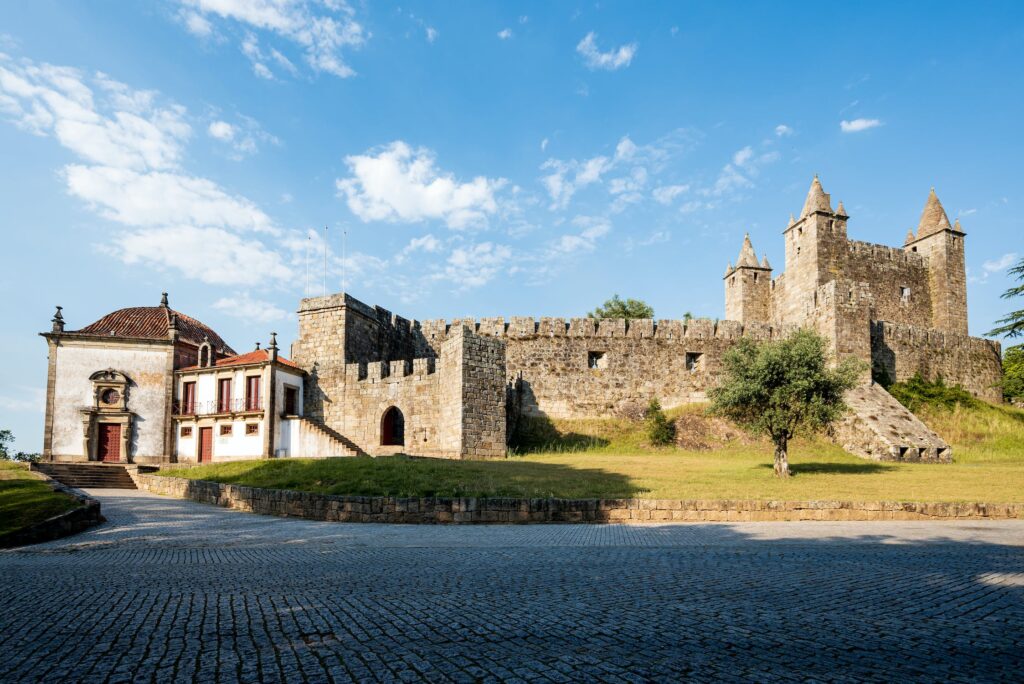
Castle of Santa Maria de Feira
The Santa Maria da Feira Castle is one of Portugal‘s most alluring castles and is situated between the lovely towns of Aveiro and Porto. It is one of the most significant Portuguese monuments because of its distinctive architectural features and significance to Portuguese history. The medieval festival, known as “Feira” in Portuguese, used to be held at the Castle’s base, from where the word “Feira” originates. A few years ago, the fair’s longstanding tradition was revived. The ticket to enter costs around 3 euros.
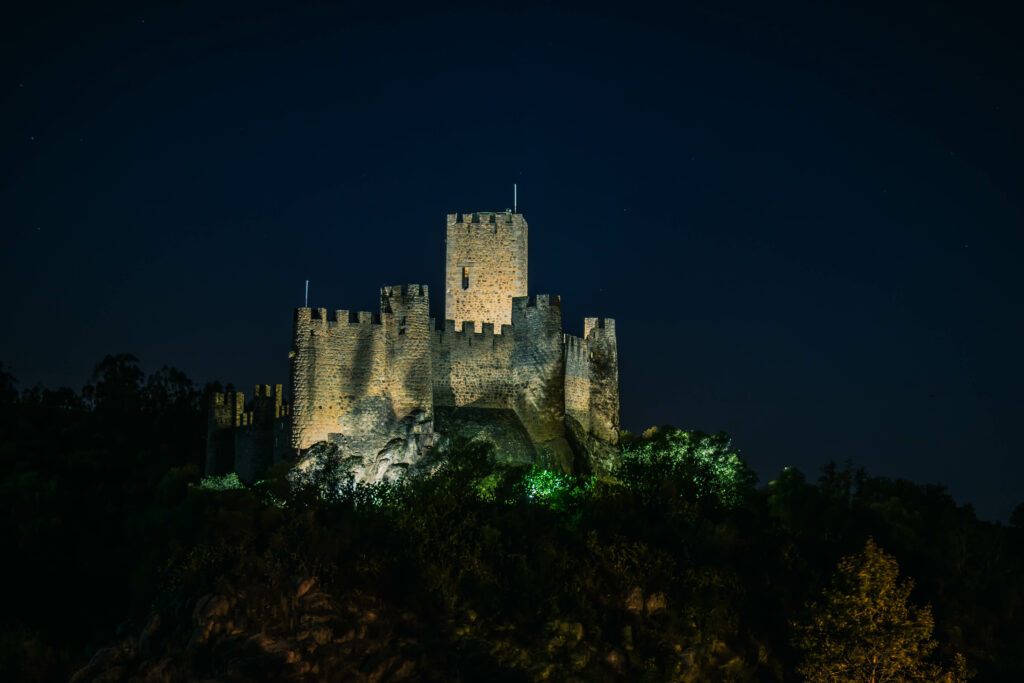
Almourol Castle
Castelo de Almourol is undoubtedly the most iconic of all the castles in Portugal because of its breathtaking location on a tiny, stony island near the Tagus River. The Castle, with its high, narrow walls adorned with towers, is the epitome of grace of ancient Portugal. It is both attractive and intriguing in equal measure. The Castle became the official house of the republic after hosting kings and knights, and it is still accessible to the public today. The entrance costs about 6 euros.
Castle of Montemor-o-Velho
The Castle Montemor-o-Velho is so ancient that it dates back to when Portugal wasn’t even defined as a country. Due to this, it is undoubtedly one of Portugal’s top castles to visit if you wish to learn about the region’s rich history. It is also special because of its extensive, fascinating, and occasionally brutal past as a battlefield between Christians and Muslims seeking to dominate Portugal. Serves as one of the most stunning destinations to see in Portugal, the size of the Castle alone makes it worthwhile to allot some time to wander around and appreciate it.
Governors Castle
Lagos, one of the places in Portugal with the highest rise in tourism, is where you can find this historical Castle. Previously, the ancient city of Lagos was encircled by Governors Castle and held behind its walls. It was constructed to protect Lagos’s citizens from any invasion. However, there is no need to seek protection within the Castle today. The only raids now are those of numerous tourists. If you wish to learn about how the Phoenicians, Romans, and Moors once lived there, make sure to visit this stunning Castle.
Castle of Tomar
One of the most important architectural achievements of the continent is the Convento de Cristo in Tomar. The Castle was created when King Afonso Henriques gave the Knights Templar “Ceras Castle” in 1159. Tomar, one of the most stunning towns in central Portugal, has this rectangular castle that towers over the village below and serves as a focal point for monastery architecture. The Castle is so beautiful, intricate, and unusual that UNESCO designated the entire building as a World Heritage Site. You are bound to feel honored to be there among such splendor. The entry ticket is available for 6 euros.
Guimaraes Castle
King Alfonso won the Battle of So Mamede, leading to Portugal’s independence about a thousand years ago, in this famous Castle. Because of its historical importance, UNESCO designated the old town a World Heritage Site in 2001. Despite having foundations that date back to the 10th century, Henry of Burgundy’s enlargement two centuries later and the addition of reinforcements in the late 1500s led to the building we see today. The Castle’s interior has been mostly destroyed, but it is worth a visit for the towers’ mesmerizing views of Guimaraes city. This Castle has a lengthy and rich history, making it an exciting location to visit in Portugal. The entry ticket costs around 2 euros.
Marvao Castle
Many majestic castles can be found throughout Portugal’s Alentejo area, but only a few match Marvao’s solitary beauty. It takes a lengthy, twisting road to get to Marvo, located 861 meters above sea level at the summit of a rocky cliff. An outstanding cisterna, still full of water, are enclosed by the castle walls. The breathtakingly tranquil environment and all the heritage it recalls, however, are what make this Castle impressive. The experience is appealing, and it takes only 1.5 euros to enter.
Silves Castle
Silves and its historic Castle appear as you drive along the Algarve’s sunny lanes. Don’t only drive by the Castle, but rather visit it to admire the views of it and the surrounding countryside. If you’re a history enthusiast, you will love its Moorish architecture. Tourists are rewarded with magnificent panoramas of the surroundings from the Castle’s vast walls, which are still adorned in stunning red sandstone. Spruce gardens are also located inside the Castle for visitors to enjoy. The ticket is about 2.8 euros.
Castle of Obidos
One of Portugal’s most magnificent castles is the Obidos Castle. It is situated near the lovely village of Obidos, which is ideal for sightseeing while admiring the views of the Castle. When you decide to come, allocate some time to take in the beautiful views of both the Castle and the town of Obidos since this is a location where you can easily spend a significant amount of time. It’s genuinely one of the most interesting castles in Portugal to see.
Castle de São Jorge
When you are in Lisbon, the country’s capital, it is difficult to miss this Castle. The Castle, perched on a hill and has defenses that date back more than 2,000 years, served as Portugal’s old headquarters for more than 400 years and is today one of the best places to see when you’re in the area. Climbing the battlements and strolling along the ramparts are the two finest ways to fully comprehend the Castle’s size. The entry ticket is 10 euros.
Castle of Braganca
The ideal site to spend an afternoon is the ancient Castle of Braganca, situated in the center of a similarly historic town, Braganca . The medieval town alone is a compelling reason to travel to this stunning region of Portugal, and Bragança’s Castle only serves to enhance its allure. Although the Castle that stands here now belongs to the 12th century and was augmented by monarchs Joo I and Afonso V in the early 15th century, it is thought that a fort was built in Bragança during Moorish and Roman times. Entry tickets cost around $5.
Arraiolos Castle
A charming tiny town in the Alentejo region, Arraiolos is home to the Castle commonly known as Paço dos Alcaides, which is perched at the summit of more than 300 meters. The fact that this 14th-century fortress with Romano-Gothic architecture is entirely spherical is somewhat surprising. In the dead of winter, being on the heights can make it much windier and colder than in the valley. Although the locals opted to abandon the area in the fourteenth century because they were sick of the wind and the cold, this abandoned palace is still well worth a visit.
Leiria Castle
The Castle of Leiria, set at the heights of Leiria, a picturesque city, should definitely be on your bucket list. After being occupied by the Moors during their rule over the Iberian Peninsula, it was eventually gained back by King Afonso Henriques in 1135, but Muslim forces retook it five years later. The Castle was finally permanently taken over by Christians in 1142; from then on, it was a popular royal getaway. Luckily, it is open every day of the week. While exploring this Castle, you’ll get a chateau-like feeling. The only way to reach the castle is to climb the unending steps to the top. However, it is worth the struggle as the Castle offers a spectacular view of the neighboring area. The entry ticket is about 2 euros.
Castle of Abrantes
This fortress, which played a crucial role in Portugal’s liberation from the Moors, is unquestionably one of the best in Portugal and an important historical site. The Castle of Abrantes which has been a prominent building for thousands of years since its location in the city has always proven significant to the area and the visit is worthwhile, even only for the fascinating look back at Portuguese history.
Alcoutim Castle
Alcoutim Castle was constructed in the 14th century to take the place of a deserted Moorish fortress further north along the river. It functioned as a line of defense against Portugal’s longtime foe, Spain. However today, only a tiny portion of the original wall remains. Visitors are welcomed with a picturesque view of the area as the Castle faces the river and the beautiful Alcoutim village. Within the keep, a fascinating archaeological museum has been created with a collection of artifacts that highlight the local history.
The Castle of the Moors
Although the Moors’ Castle in Sintra is not the city’s most well-known or popular attraction, historically speaking, it is one of the most significant buildings. Before Afonso Henriques, the first emperor of Portugal, took control of it in 1147; the fortress was a vital Moorish stronghold. Take a stroll around the Castle’s ramparts to take in the breathtaking panorama of the area. On a bright day, you may even see the Atlantic Ocean. The Castle is so remarkable that it has been included on the UNESCO World Heritage Sites recommended for visitors to Portugal. The entry ticket is around 8 euros.
Castle of Penedono
This Castle in remote Penedono is fascinating. The sturdy, lichen-covered fortress, perched on rocks and looking as if it were chiseled from a single granite rock, has existed here since the 10th century. The Penedono Castle was converted into a home at the beginning of the 16th century when Penedono’s population increased. By the 1800s, it was in poor condition. The Castle, renovated in the 1960s, is now a symbol in the area known for its massive castellated walls. It now towers in calm majesty. Luckily, entry is also free.
Castle of Mertola
Mértola tucked away in the deep southern borders of the Alentejo, has a rich past that spans the Phoenician, Roman, and Islamic eras. In 1031, the settlement declared its independence from the Caliphate of Cordoba, but not long afterward, the ruler of Seville conquered it. In later years, the throne of the fortress frequently changed hands between different Muslim monarchs. Mertola was handed over to the Order of Santiago after the Reconquista was complete. The Castle had lost most of its importance by the 18th century, but the 19th century saw a revival during the expansion of the surrounding area. The fortress has been entirely kept, including the walls, towers, and internal buildings. Mertola Castle stands as the jewel in the crown of the rich Portuguese history. Before viewing the Castle, you should stroll the surrounding lands, excavated to uncover the remains of Moorish residences. Visitors can also enjoy the Castle’s labyrinth of tiny streets and alleyways.
Castle of Monsaraz
The Castle, a part of the walled medieval town of Monsaraz in the Alentejo, is one of Portugal’s most recognizable structures. From its perch atop the hill, the Castle oversees the tiny community of fewer than 800 people. It is situated on the western edge of the cliff and was constructed in the 13th century on the orders of Kings Afonso III and King Dinis as part of a network of border defenses to fend off the Spanish invasion. The views are amazing, and you may also treat your eyes with stunning countless acres of neatly mowed fields.
Sabugal Castle
After the Conquest, the fortress was built in the eastern region of Portugal. It was strategically significant because it was close to the Spanish border, but was abandoned and demolished quickly. There are still some residential structures, fortification walls, and towers here. Although most parts of the site are in disrepair, some have been rebuilt, such as the neighborhood church. The charming city of Porto is approximately 2 hours and 20 minutes from the Castle of Sabugal. A trip to this Castle is like plunging into a centuries-old tale of conquests, invasions, and intriguing history.
Belver Castle
The first and most significant Castle built by the Knights Hospitallers in Portugal during the Middle Ages was Belver Castle. It was constructed to protect the Tagus River’s access route. During the Christian reconquest, Belver was one of the key strongholds. Its advantageous location halted further invasions. To stabilize the Christian-Muslim frontier at the Tagus River, the Order was commanded to construct this castle.
Castle of Evoramonte
Following the Christian conquest of the entire Iberian Peninsula, the Castle of Evoramonte, located near Evora was used to defend the state border of Portugal in its newly acquired territory. This magnificent Castle has been inhabited by people as diverse as the Romans and the Moors throughout history. Now, it has become a particularly iconic location because of bring the site where a peace treaty was signed, bringing an end to the civil war in Portugal in 1834. It is impressive, and the historical information here dates back thousands of years. Fortunately, entry is free.
Castle of Viana do Alentejo
It is acknowledged that there wasn’t any castle or surrounding building in the town of Alentejo till 1470. In 1478, D. Afonso V wrote a letter to the municipal council of Viana concerning the possession of the mayor’s office. In this letter, he referred to a request to “build a fortification in said town for its protection.” Thus the castle was constructed at a prominent location in the village’s historic district and set within a metropolitan area. It is not very large and has a pentagonal layout. Robust cylindrical towers strengthen the vertices. All four of these towers are constructed similarly and are made of plastered brick. While the windows are rectangular and set at walkway level, the roofs are conical.
Porto de Mos Castle
One of the lesser-known Portuguese castles, this lovely structure has undergone numerous transformations after being damaged by earthquakes and being rebuilt. This, combined with the fact that many ruling parties have occupied the Castle over time, has given the building a somewhat distinct appearance and atmosphere. It draws visitors for its distinctive architecture and historical significance. The castles of Portugal rarely have tapered tower roofs but this one does. Porto de Mos resisted the Moors’ assaults, much like Leiria had done. Today, the Castle hosts various events and excursions, and the walls are frequently repaired.
Beja Castle
The Roman Empire and the Lusitanians reached a 49-year peace at this site. The Castle and the city’s initial defenses were constructed in the third century. It sustained significant damage in the 19th century due to the Lisbon earthquake and Napoleon’s invasion. The keep, regarded as one of the most magnificent in Portugal, is one of the six towers that border the pentagonal floor of the Castle. You may take in stunning city views from the top of its tower, which is an impressive 24 meters high. The walls, interior structures, keep, and buildings of the stronghold have all been well preserved.
Castle of Rodrigo
The Castle of Rodrigo is one of the oldest in Portugal. It is a quiet, peaceful site worth visiting for its historical significance, the beauty and freshness of its setting, and the homes enclosed within its walls. It was most likely established in the fifth century BC. There is little information about what happened to the Castle between the fifth century and the Reconquista. Castelo Rodrigo was employed in the internal conflicts and the Portuguese War of Independence after the 13th century. The majority of the structures are still standing but in ruins.
Palmela Castle
Under the direction of Roman builders, the first defenses were constructed in this area in the 4th century BC. Later, Visigoths and Arabs, as well as Christians following the Reconquista, came here. After the Castle was given to the Order of Santiago, most of the structures were reconstructed by Christian architects in the 1300s. Palmela has been well-preserved to this day because of its advantageous location close to Lisbon. It is located at an elevation of 240 meters above sea level. Following the hill’s topography, the castle walls are fortified with square and round turrets. The Santiago de Palmela Convent and Church, Igreja de São Tiago de Palmela, and Igreja de Santa Maria are all located inside the castle walls.
Castle of Alcacer do Sal
During the Muslim invasion of Portugal in the eighth century, a small village was established and defended on the Sadu River. In the later 12th century, however, the castle Alcacer do Sal was constructed here. Afonso I the Great, the first monarch of Portugal, attempted to take the Castle during the Reconquista with a unit of about 60 soldiers but was unsuccessful and injured. The Catholic Order of Santiago then ended many Muslim uprisings that occurred here. The Castle was no longer used for military purposes by the 15th century; instead, it was used for festivities.
Castle of Ourem
In the 1300s, a Moorish fortress was demolished to make way for this Castle. Ouren is one of Portugal’s most stunning castles despite not being visited frequently by tourists. The defense was given to the Catholic Church after the Reconquista, and in the 1700s, it was converted into a royal home. The king’s residential structure is in deterioration, and the old Castle is the one that has been preserved the finest. There are gardens on the fortress’s grounds, and the walls provide a lovely perspective of the valley. The entry is free too.
